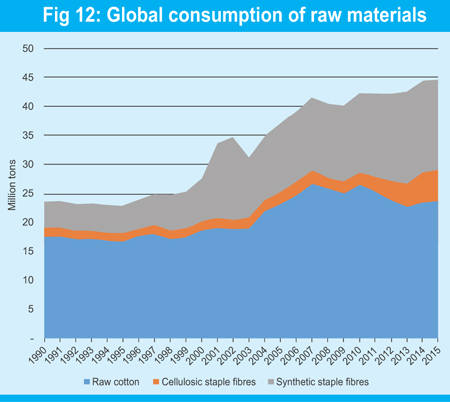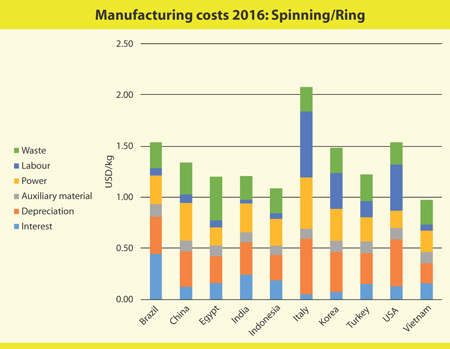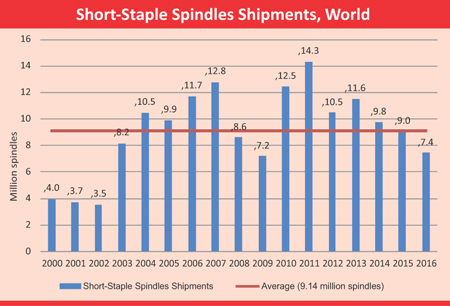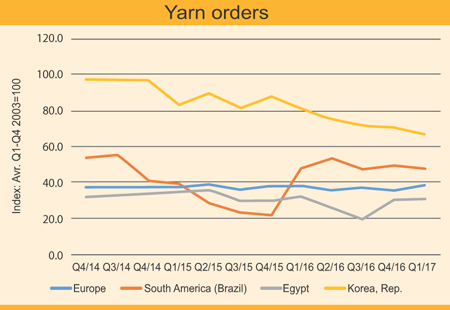The International Textile Manufacturers Federation (ITMF) is one of the oldest non-governmental and non-profit international trade organisations. It was founded in 1904 and comprises members from the textile, textile machinery, and fibre industries. These members come from all five continents and represent the majority part of the world's textile production. The ITMF has three different member categories:
1) Member Associations
This category comprises national textile associations representing the countries' textile industries.
2) Associate Members
This category comprises associations from other industries affiliated with the textile industry like fibre or textile machinery associations.
3) Corporate Members
This category, which was introduced in the year 2000, is open to textile and other companies with an affiliation to the textile and apparel industry. This membership segment is growing strongly and comprises companies from Bangladesh to Italy and Indonesia to Pakistan.
The main objectives of ITMF are:
*To provide an international, neutral platform for discussions and networking,
* To act as a central body of the global textile industry for the collection of information and statistics,
* To represent the world textile industry vis-à-vis governments and intergovernmental organisations as well as any relevant organisation from the private sector.
The tools to achieve these objectives are threefold:
1) Publications/Reports/Newsletter
ITMF on a regular basis publishes a variety of publications, which provide statistical and non-statistical information to assist readers in identifying the ongoing changes and developments in the global textile and allied industries.
Among its various publications, the oldest one is the "International Cotton Industry Statistics," which was introduced in 1958. It informs annually about the installed spinning and weaving capacities and the raw material consumption of cotton, cellulosic, and synthetic fibres in every country around the world.
1. Example of international cotton industry statistics
The "International Textile Machinery Shipments Statistics" is published annually since 1974. It presents data on shipments collected from the world's leading manufacturers of textile machinery. These figures are broken down by country of destination and cover new ring spindles, open-end rotors, draw texturing (false twist) spindles, shuttle- and shuttle-less looms, large circular and flat knitting machines as well as a selection of dyeing and finishing machines. This publication allows seeing where new investments are taking place.




2. Example of international textile machinery shipments statistics
Published every other year since 1979 in cooperation with four textile machinery companies, the "International Production Cost Comparison" examines the production cost structure for yarn (spun and textured) and fabric (woven and knitted) in Brazil, China, Egypt, India, Indonesia, Italy, Korea Republic, Turkey, USA and Vietnam. It presents a very detailed analysis of individual cost factors (in USD).
3. Example of international production cost comparison
The "State of Trade Report" shows country-by-country, regional, and global changes in production, stocks, and orders in the spinning and weaving sectors (short-staple) in the most important textile producing countries on a quarterly basis.
4. Example of state of trade statistics
Since 2014, the ITMF also publishes the "ITMF Newsletter". This publication is for the members only and comprises exclusive articles, data, analyses and interviews relevant for the entire textile value-chain.
2) Committees
The Federation has established several committees focusing on more specific topics. Whenever members of the Federation feel that specific issues should be addressed, they can either discuss them in an existing committee or establish a new one. Five different committees are active now.
The Spinners Committee consists of spinners. It is working to improve fibre quality in the spinning process by emphasising the importance of suitable fibres, encouraging fibre producers to supply quality fibres and supporting efforts to introduce testing instrument for fibre quality.
The Joint Cotton Committee entails representatives of the Spinners Committee and the cotton industry/trade. It focuses on improving trade rules in an increasingly demanding business environment.
ITMF members, who are engaging in the Home Textile Producers Committee, have a specific interest in the evolution of this segment. Lately, it has started the "ITMF Audit Initiative" with ultimate objective of reducing the number of audits in the field of social compliance. The committee aims to contain the proliferation and duplications of audits that are costly in terms of money and time for all companies along the entire textile value-chain.
The Fibres & Applications Committee is a platform (within the Federation) on which its members can discuss issues related to the segment of technical textiles and non-woven. The committee organises company visits and workshops/seminars that allow learning more about this relatively new and diverse segment of the textile industry. Recently, it conducted a seminar on "Cotton Fire Retardant (FR) Finishing - How to Add Value" and plans to conduct a workshop on "Composites" combined with a visit of production sites.
The International Committee on Cotton Testing Methods offers a platform for researchers at cotton research institutes, cotton instrument producers, and cotton spinning companies who share an interest in improving both cotton testing methods and instruments. The committee recognises new cotton testing instruments to encourage the development and production of ever-better testing methods.
3) Annual Conference
The ITMF Annual Conference is the highlight of the Federation's activities over the period of a year. The members of the Federation meet for 2-3 days to discuss and network intensively. During these days, the delegates listen to a variety of experts from around the world presenting their views on topics relevant for the entire textile value-chain from fibre to retail. On the fringes of the conference, the delegates interested in the work of the committees can attend the committee meetings where they can be updated on the latest activities.
An important aspect of the conference is, of course, networking. People meet old and new friends and colleagues and share experiences and expertise. They exchange opinions and views in a relaxed atmosphere. One can meet a colleague from another country or region and discuss the challenges and opportunities in their respective business. He/she can also meet representatives from other industry segments, suppliers of fibres or machines, and have a good overview of the evolutions taking place in the entire textile value-chain.
In summary, the ITMF is an organisation that offers its members a variety of unique services and benefits to help them better understand the ongoing developments and changes in the global textile industry.
Dr. Christian Schindler is Director General of ITMF.
christian.schindler@itmf.org
© 2025 - All Rights with The Financial Express
